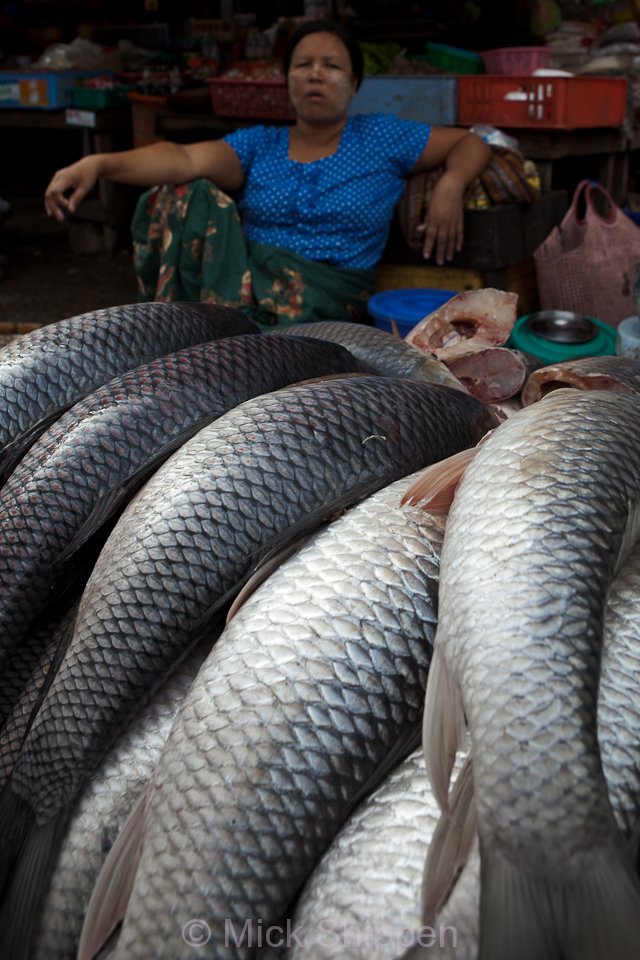Afternoon Stroll, Phnom Penh
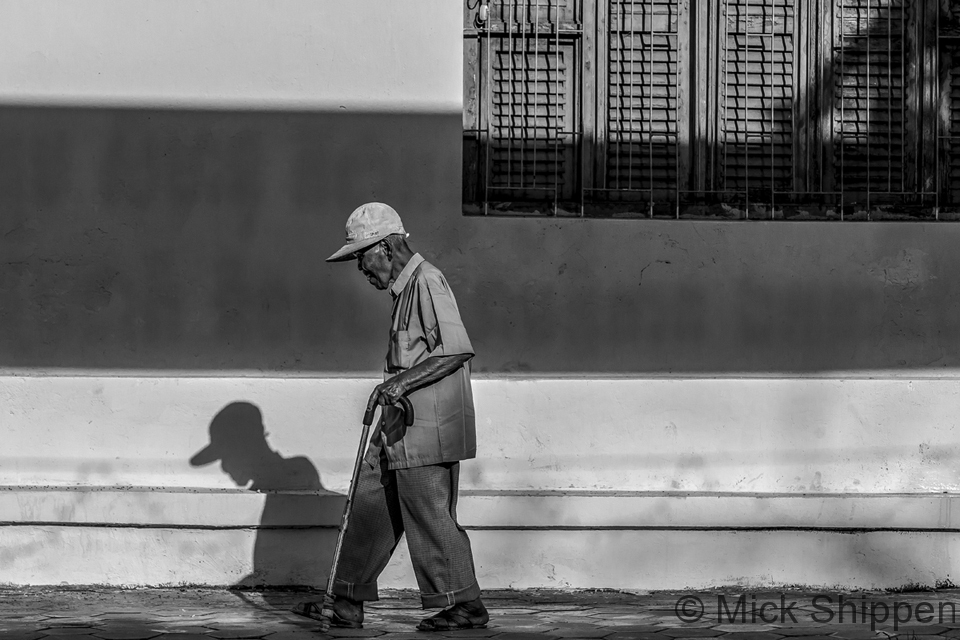
travel photographer & writer
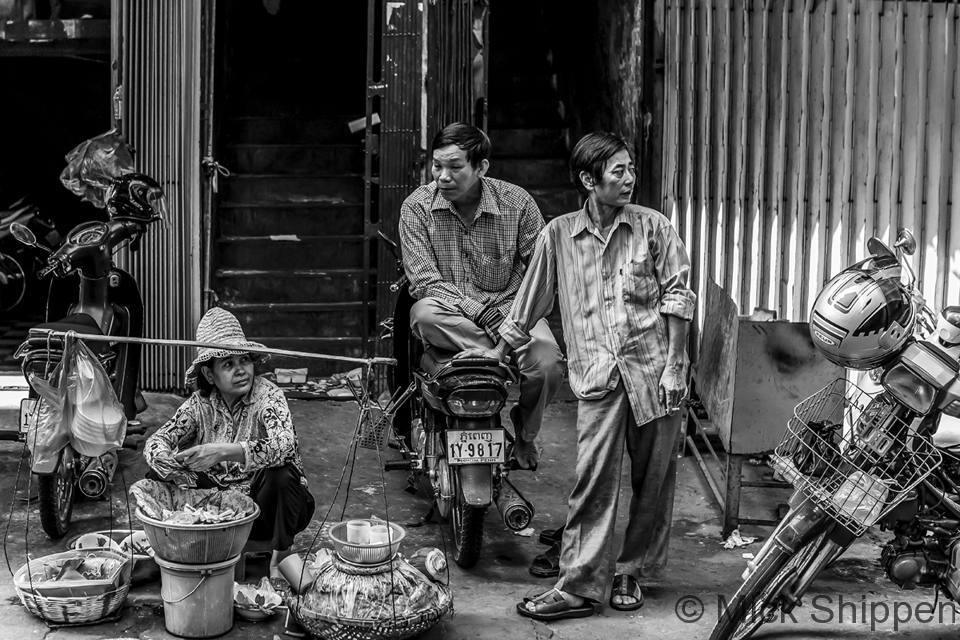
A soup seller with her earthenware pot wrapped in lotus leaves sitting in a side street waiting for customers.
Earlier in the year I was working on my forthcoming book ‘Presenting Cambodia’, a commissioned A4 hardback which provides an overview of this wonderful country through text and around 250 images. My chosen mode of transport in Cambodia, and anywhere else for that matter, is a motorcycle, preferably a dirt bike so I can get off road when the desire takes me.
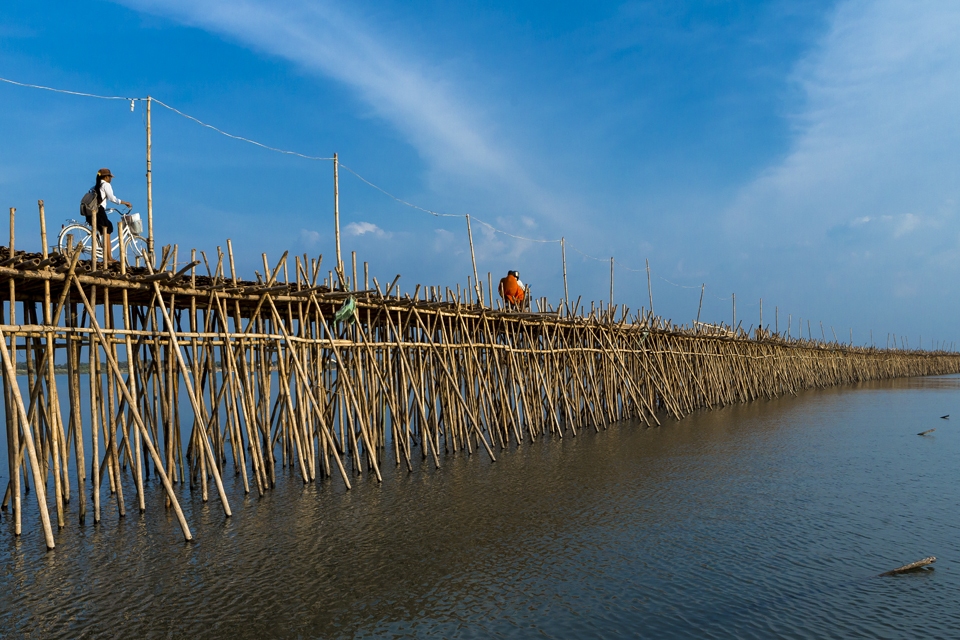
In February I hired a bike in Phnom Penh and headed northeast. The first stop was Kompong Cham. The town takes its name from Cham Muslims who have a sizeable population in the area and there are Cham fishing villages to discover on both sides of the river. The town is the perfect destination for a few lazy Mekong days.
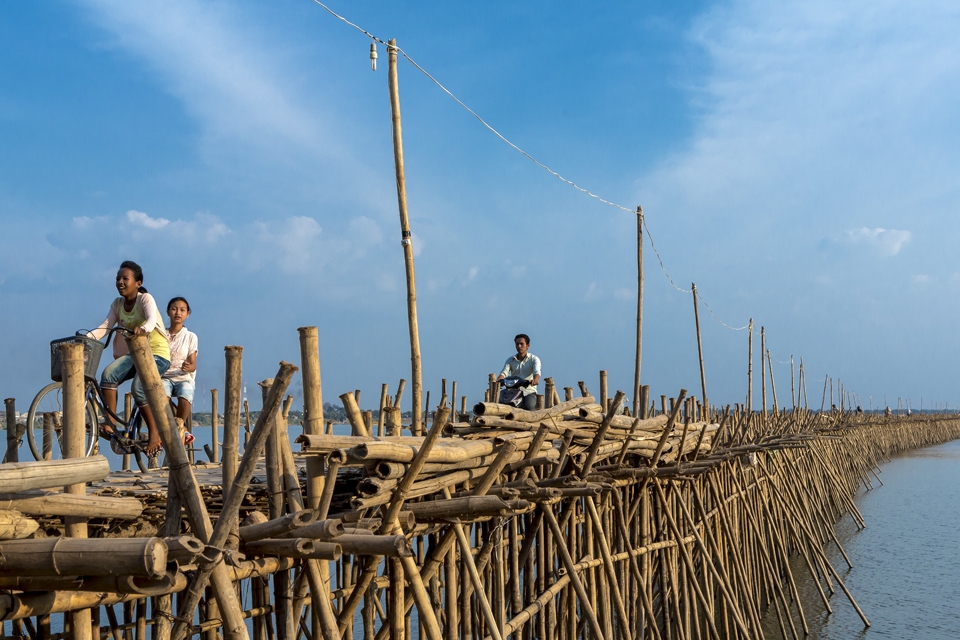
One of the highlights Kompong Cham is a day spent exploring nearby island, Koh Paen. During the cool and dry seasons it can be reached by a bamboo bridge. Built every year when the Mekong’s high waters recede, the fantastic structure stretches for almost one kilometres and is wide enough and strong enough to take the weight of small trucks. In the late afternoon a pleasant hour or two can be spent at the bridge observing the to-and-fro of locals, and watching fishermen cast their nets into a river illuminated by the setting sun’s fiery glow.
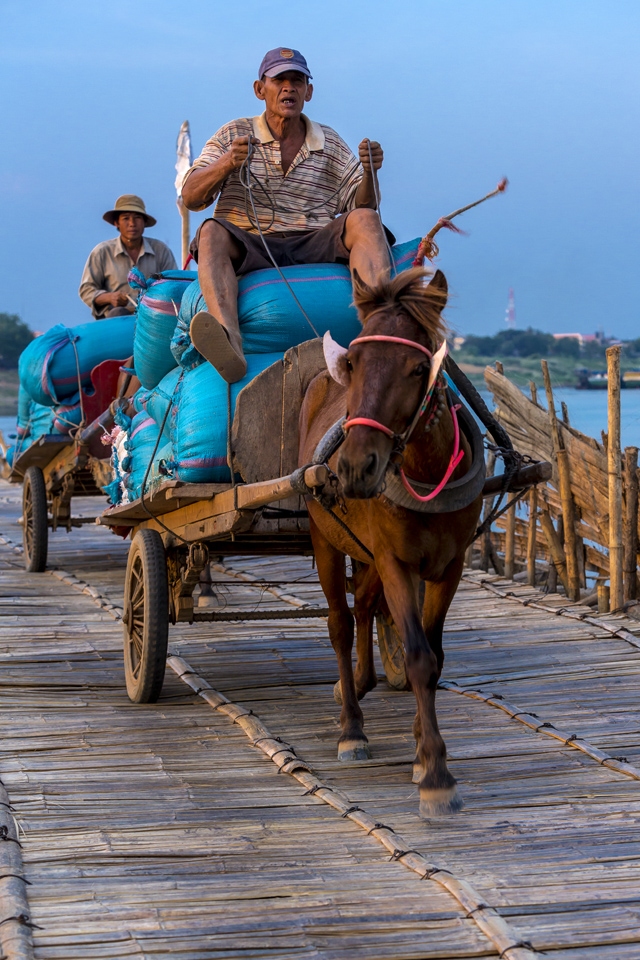
While there, I bumped into the diminutive and enthusiastic Vietnamese photographer, Hao Dinh, and we spent a couple of memorable afternoons exploring the island and photographing the bridge.
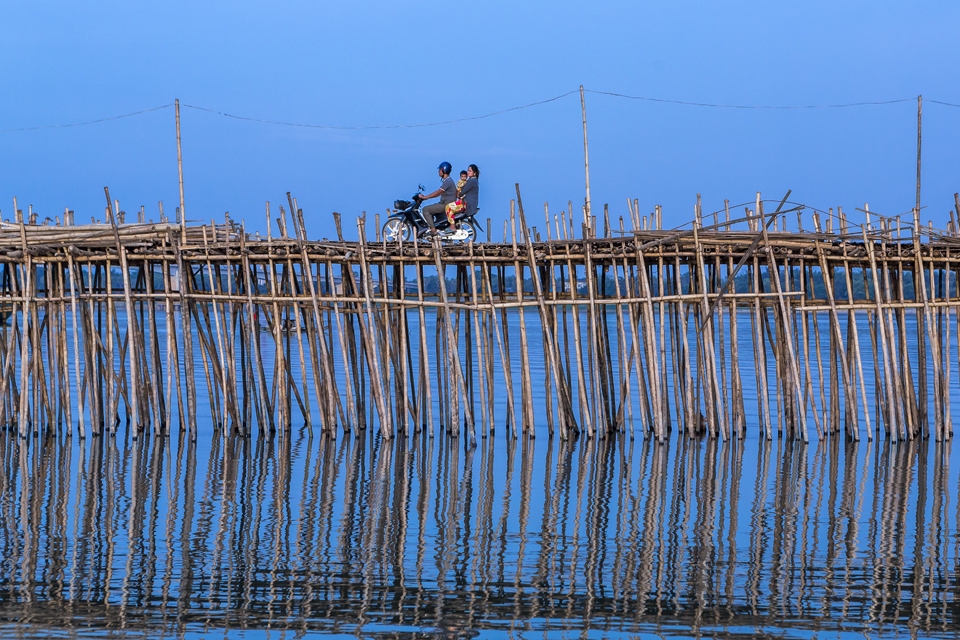
All but the first image are out-takes that never made it into the book. I gave up long ago trying to fathom the ways of publishers…
Presenting Cambodia should be out in late October or early November.
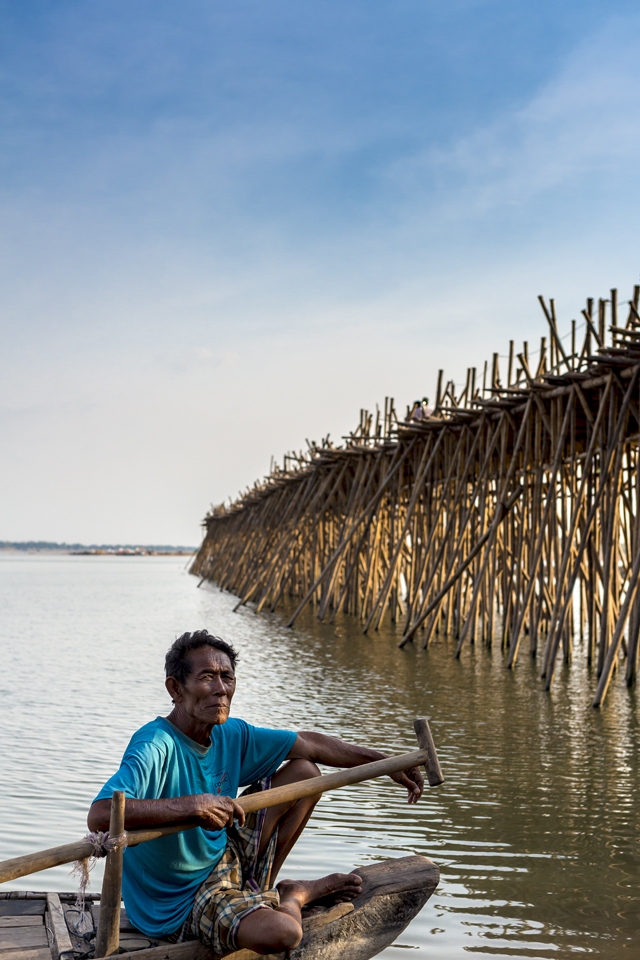
It has been disturbing to witness what has happened to Angkor over the last few years. Even now with the rainy season in full swing visitor numbers are still high. As one hotelier said to me, ‘for the Chinese and Koreans there is no low season’. Nevertheless, the next month or two is without doubt the best time to go. Leave it until November and you won’t be able to turn sideways without hitting another tourist in the face with your 70-200 mm lens.
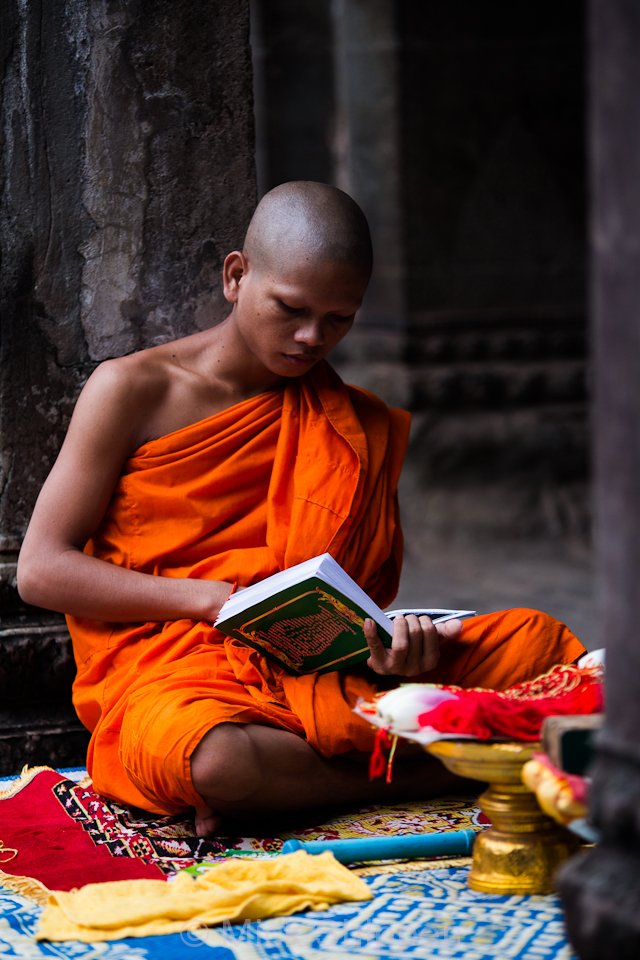
The highlight for many is Angkor Wat; dawn ‘til dusk it simply heaves. The temple complex covers an area of one square kilometre and comprises of three levels around a central tower. The entranceway is particularly impressive and is the site of the early morning pilgrimage for the obligatory sunrise photo shoot. Inside the confines of the temple the inner and outer walls are covered with exquisite bas reliefs. If you want to get a detailed explanation of what you are looking at, you can hire an official guide at the entrance to the site.
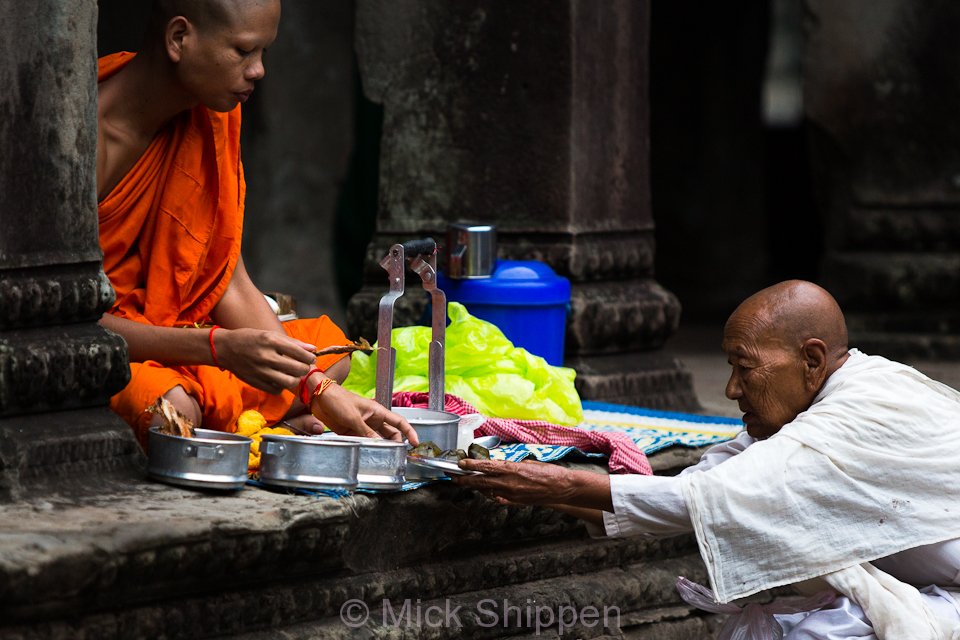
Due to the millions of visitors, the monks of Angkor are powerless to resist the lure of the dollar, and the monumental site which was once lost to the jungle now functions as a temple again. At its heart is a small shrine where a monk sits patiently waiting to extract money from the faithful (or gullible, depending on your perspective) in return for a splash of holy water and a blessing muttered in Sanskrit. If you are there early enough and sit quietly within the shaded cloisters you can almost imagine a time before Buddhism was corrupted by cash, egotism and self-interest, if indeed such a time ever existed.
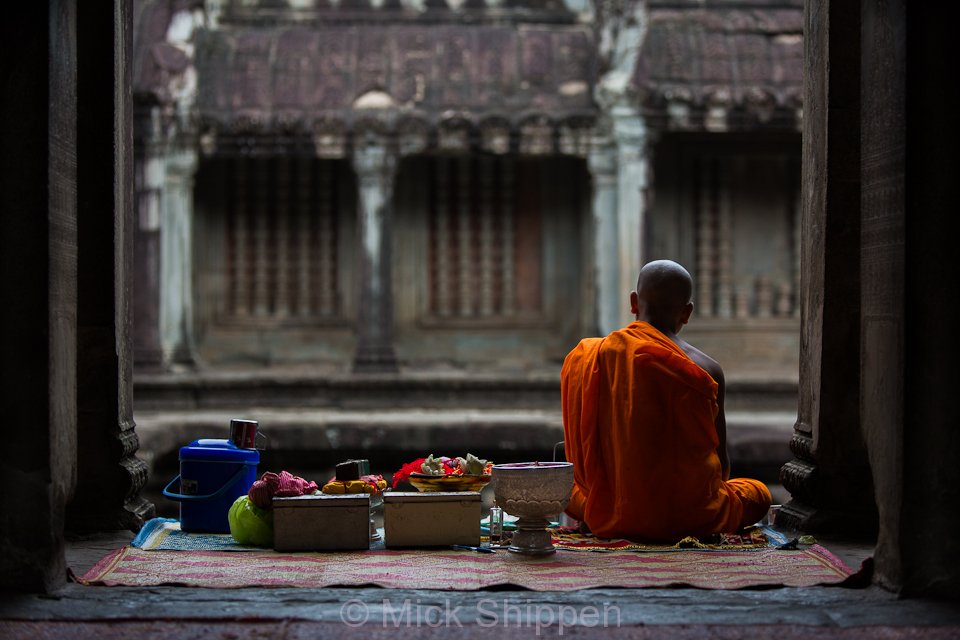
While I was there, a nun approached a monk who had been quietly reading and presented his breakfast as an offering. As she handed over the food, he averted his eyes, recited his blessing and then tucked into his food while she moved on and prayed to an image of Buddha. It was a timeless scene played out at Angkor Wat for centuries.
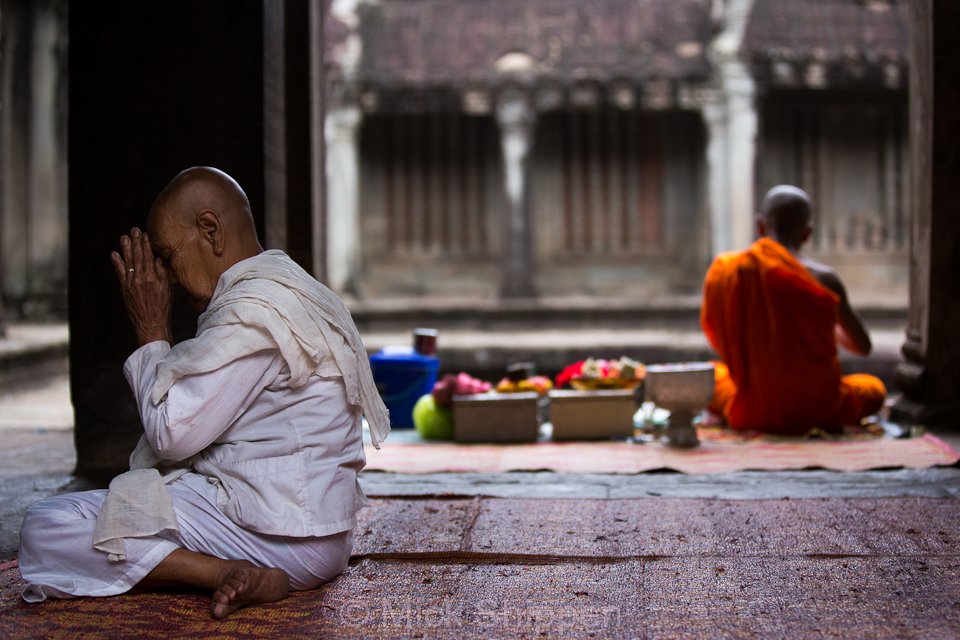
Getting there:
Flying into Siem Reap from Thailand you are at the mercy of Bangkok Airways’ monopoly of the route and its grossly inflated price for the 50 minute flight. At this time of year, expect to pay around 11,000 baht. Flights leave several times a day from Suvarnabhumi Airport. A visa on arrival is available at Siem Reap airport for $20. The entry procedure is quick and efficient. If you have arranged your accommodation in advance, ask for an airport pick-up. The ride into town takes around 20 minutes. There is no longer a departure tax at the airport.
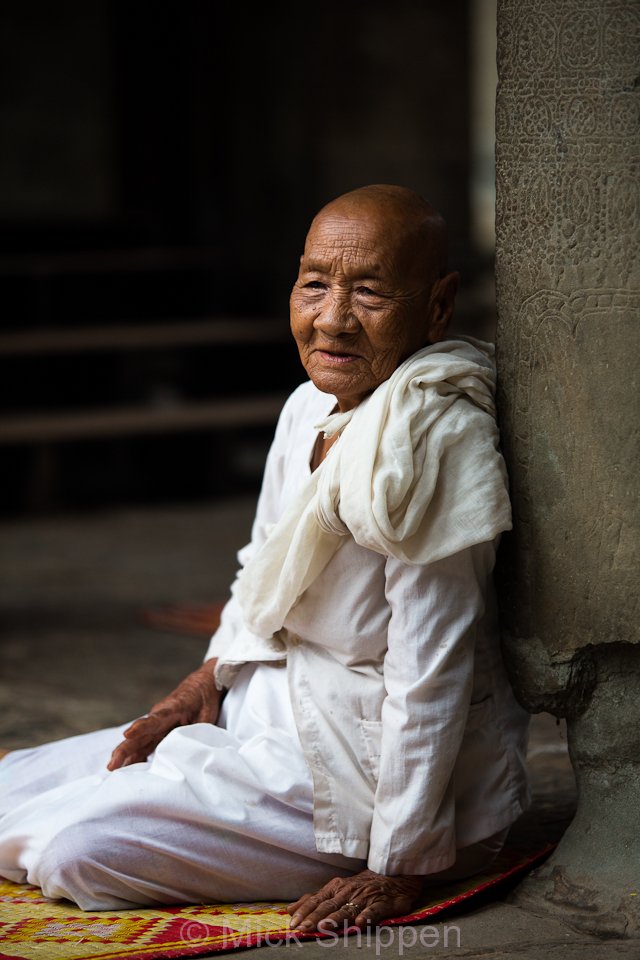
Apsaras are alive and well in modern-day Cambodia and can often be seen posing for tourists at Angkor highlights, Angkor Wat and the Bayon. Even celestial nymphs need to earn a crust and charge tourists a dollar a pop to be snapped with them.
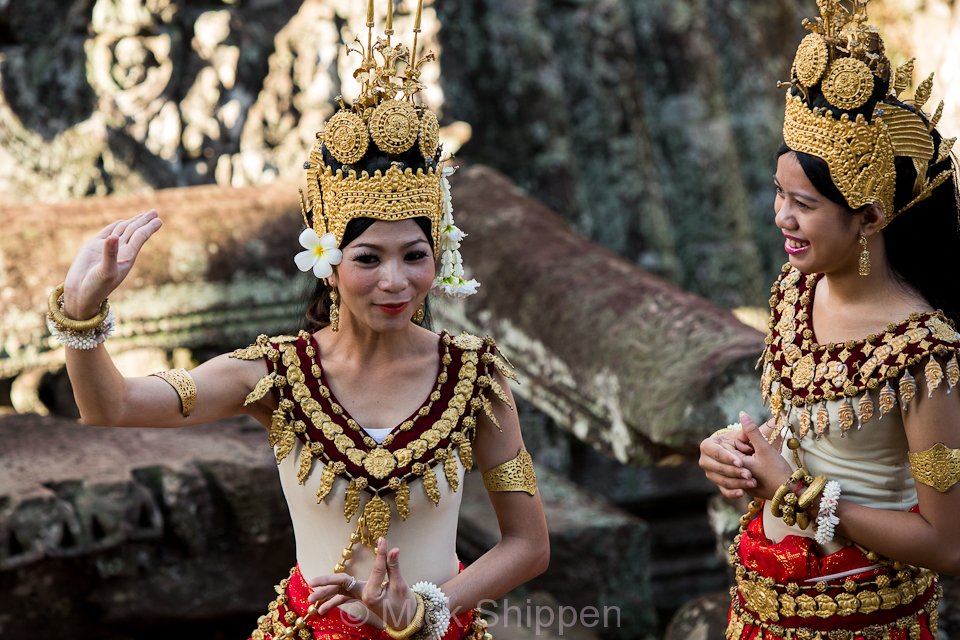
It’s all very much part of the circus that Angkor has become in recent years; an ant hill crawling with 3 million visitors a year. Professional photographers even stump up the cash to ensure they get a contrived pose for their portfolio.
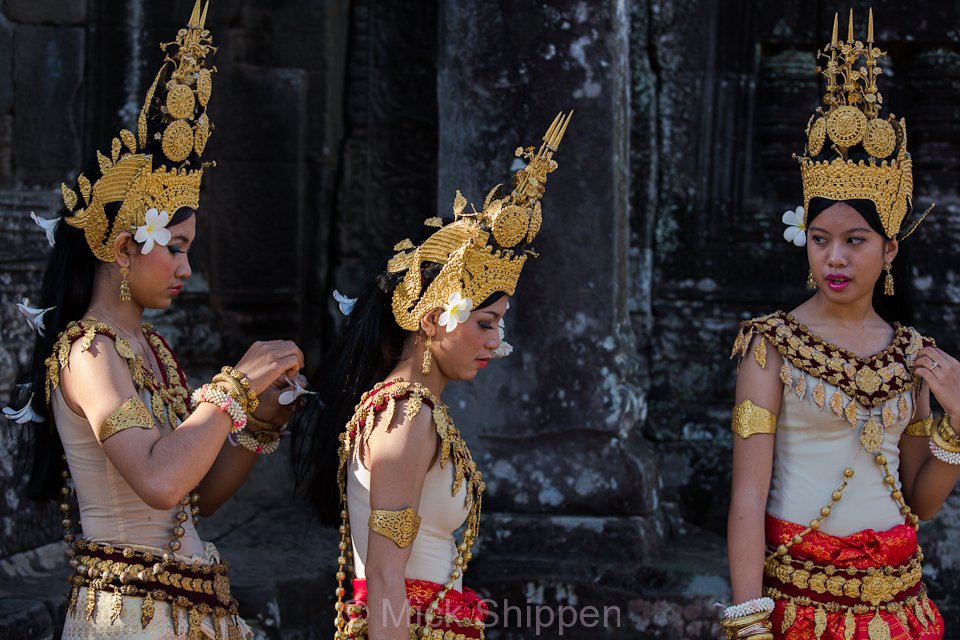
More interesting for me was to sit quietly and wait for an unguarded moment when no customers were around.
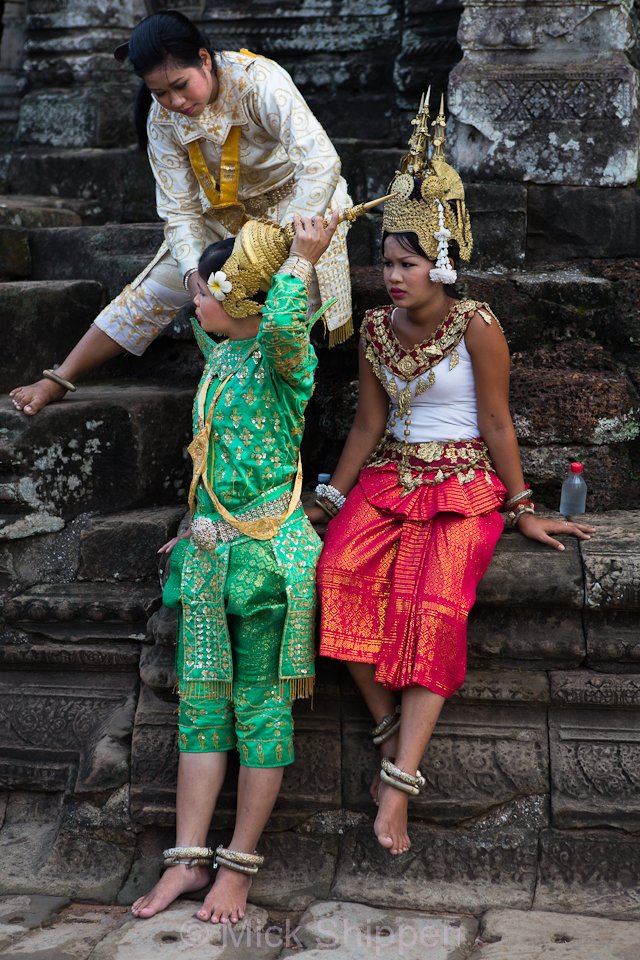
The reward was capturing golden Apsaras flitting through the ancient grey stones, decorating each others hair with flowers, showing each other poses…
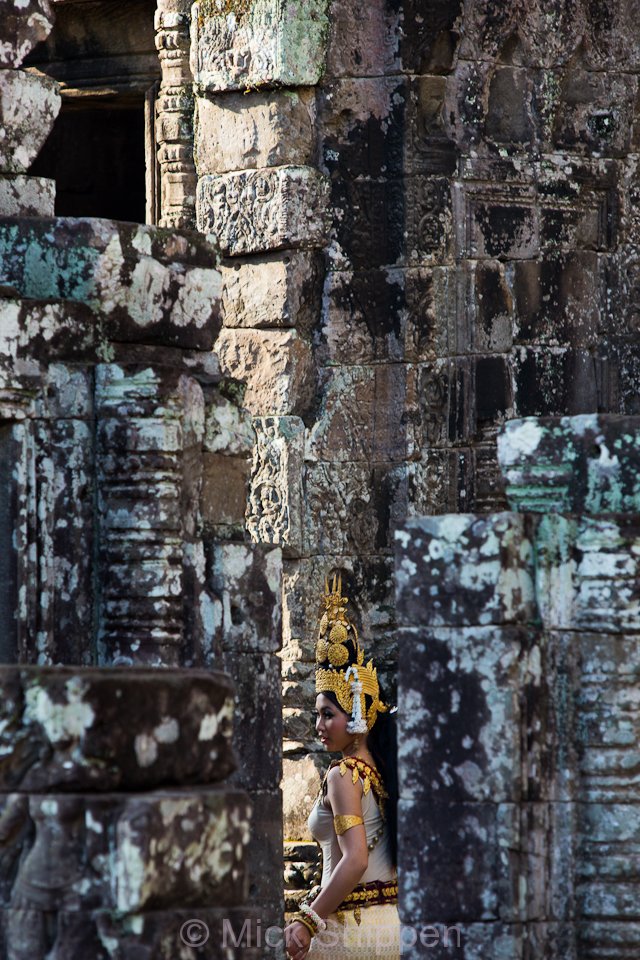
..and, as you would expect of a celestial nymph, wearing slippers.
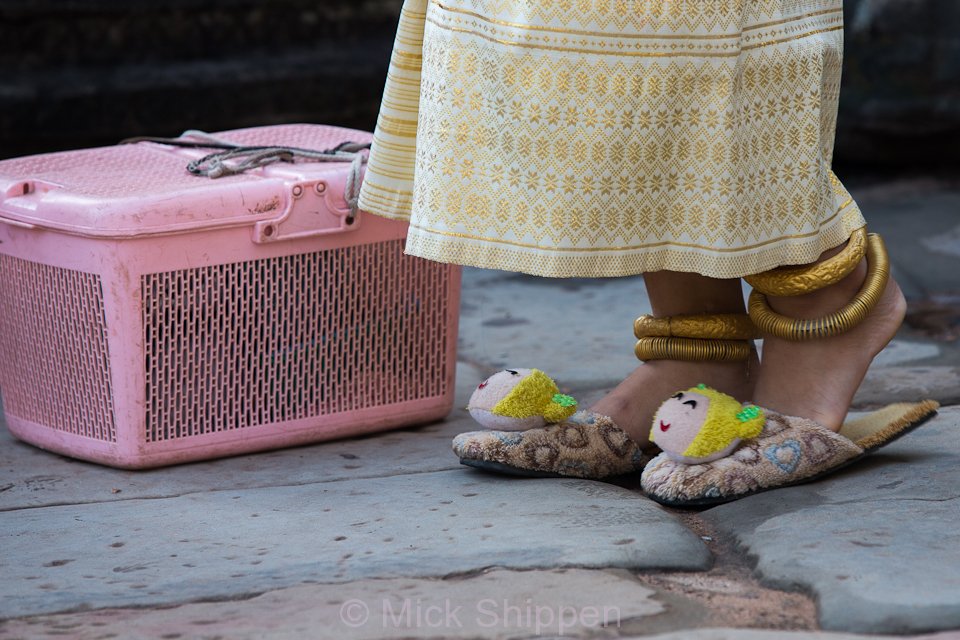
Visitors to Cambodia soon add a new word to their vocabulary – Apsara. Often appropriated as a name for resorts, travel companies, and restaurants, Apsaras are mythical female celestial dancers that graced the walls of Angkor-era temples as early as the 8th century AD.
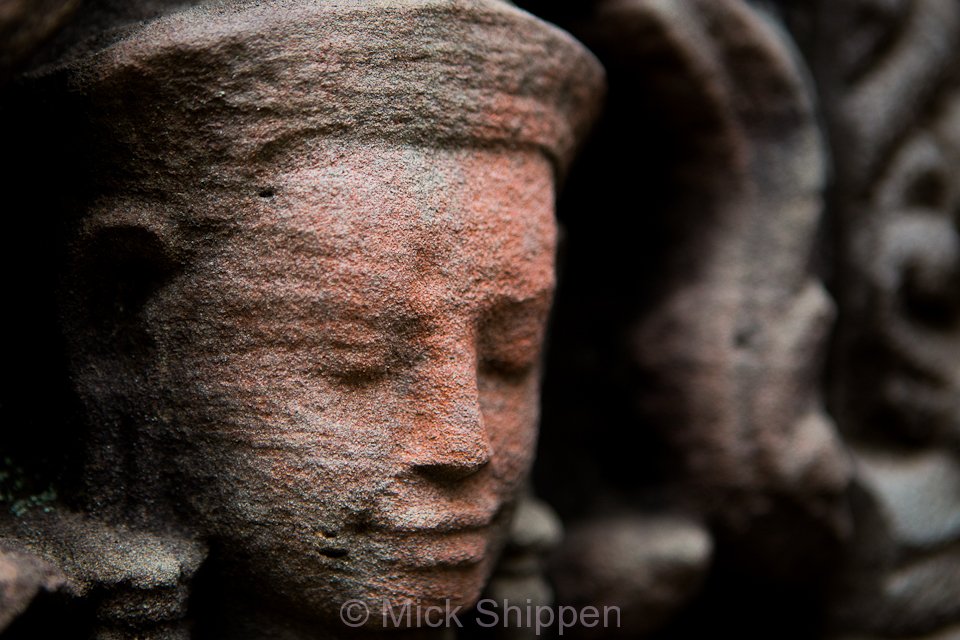
Scholars of Khmer art and archaeology often differentiate between the sensual flying nymphs or Apsaras and enigmatic standing figures known as Devatas which are thought to be guardians of the temple. Exquisite bas-reliefs of the highly stylised figures can be seen in abundance at Angkor Wat where over 1,700 have been recorded, and at other ancient monuments at the UNSECO World Heritage Site.
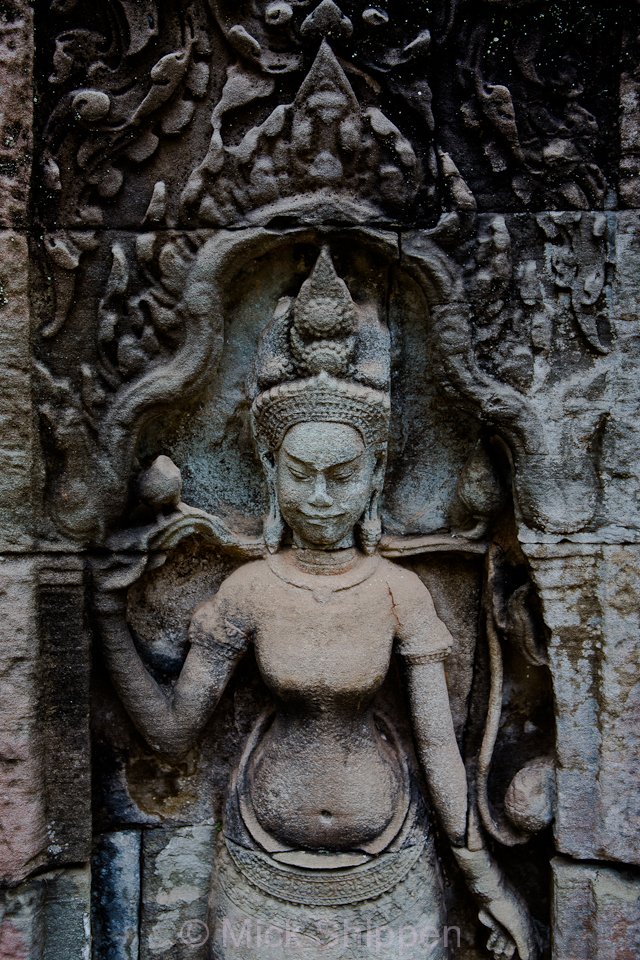
Today the spirit of the Apsaras has been revived by Cambodia’s bourgeoning tourist industry and they appear in performances of beautifully choreographed Khmer dance drama.
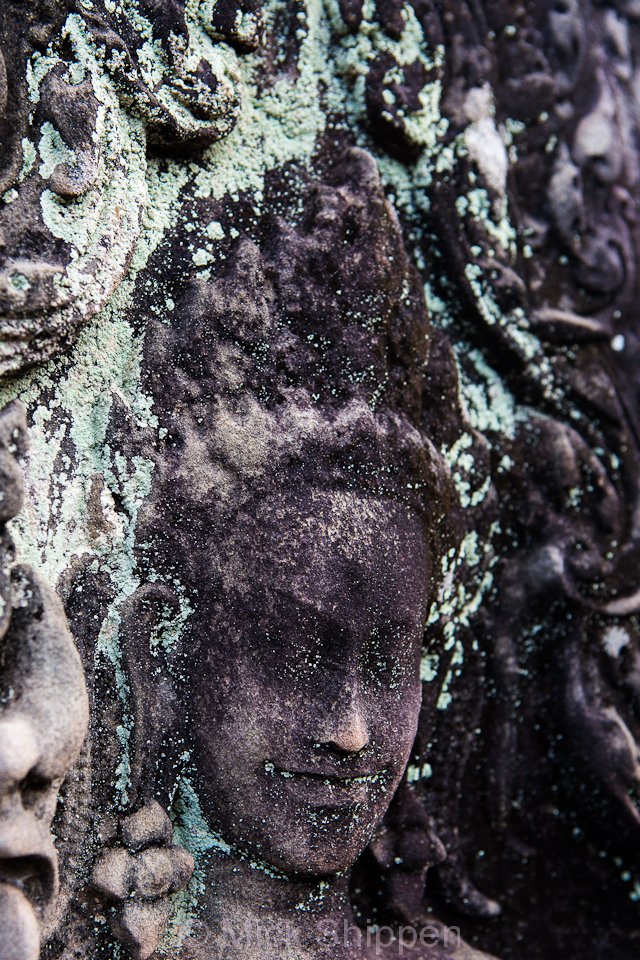
During a recent visit to Angkor I developed a bit of an Apasara obsession and ended up photographing dozens of them, many weathered by time into beautiful and ghostly images.
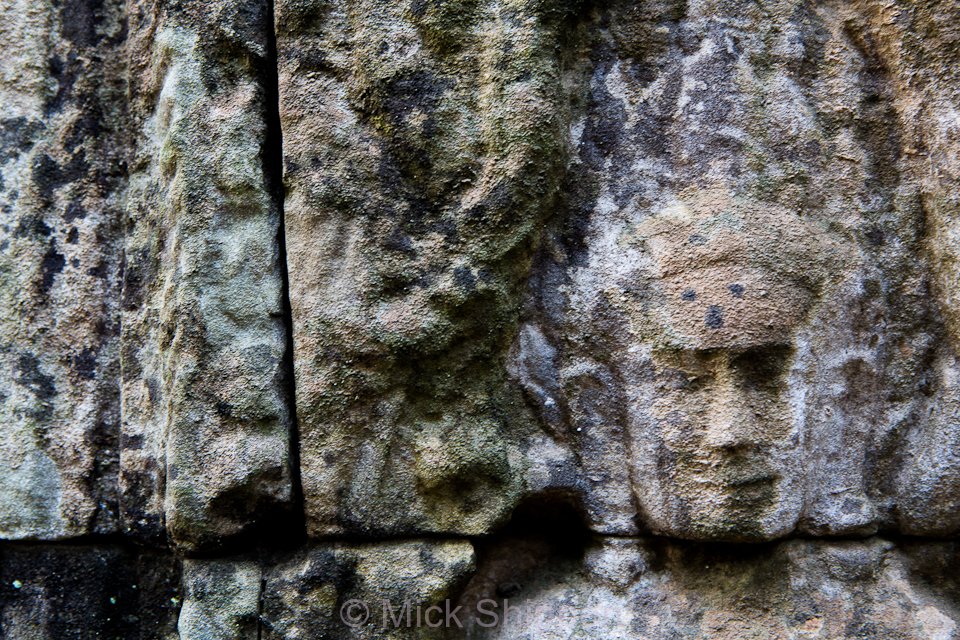
While in Phnom Penh I stayed just around the corner from the Monument of Independence. Flight delays meant that I arrived just as the light was starting to fade. I checked in, threw my bag on the bed and dashed out to take advantage of the ‘blue hour’. I was just in time to catch a couple of long exposures. The next day a crane moved in, fences were erected and workmen started ripping up the marble around the monument for renovation…
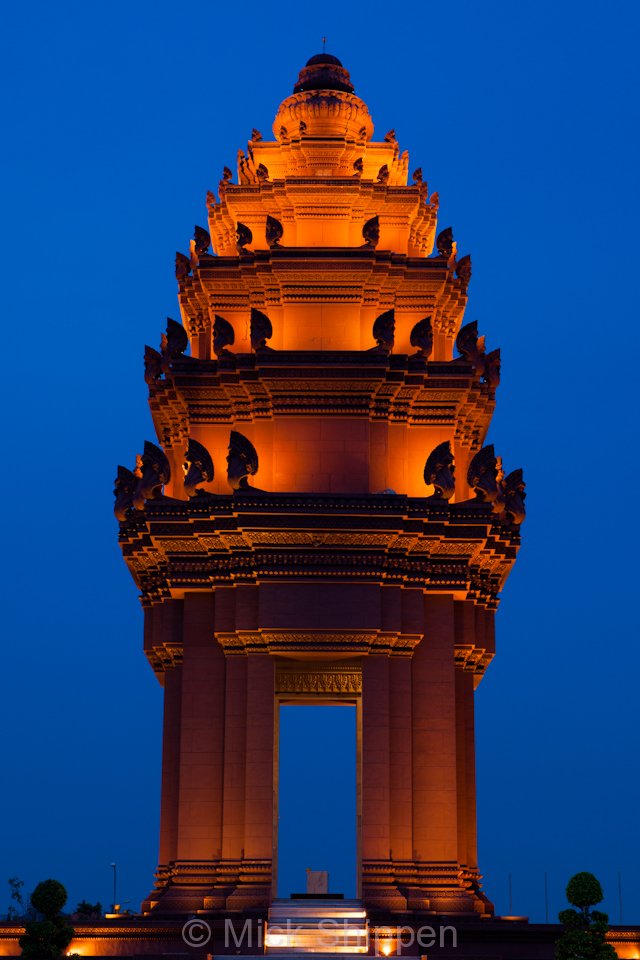
The Monument of Independence is a memorial to Cambodia’s war dead and also commemorates independence from the French which was granted in 1953. The impressive structure acts as a busy traffic circle at the junction of Sihanouk and Norodom boulevards.
The recent flurry of activity of late is because I am flying off to the UK on Friday for an photography exhibition and awards night and won’t be able to post for a while. More on this later.
On a recent trip to Phnom Penh, the capital of Cambodia, I spent a couple of mornings at a school that teaches youngsters the art of classical Khmer dance. Watching the elegant teacher instruct the children was an experience I found much interesting than seeing an actual performance.
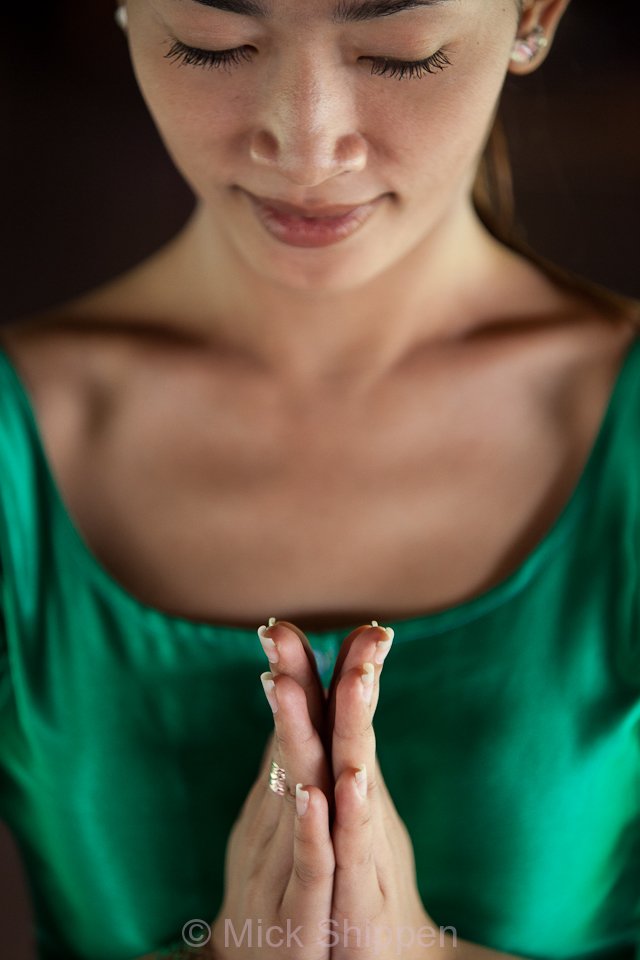
During the Khmer Rouge years, the brutal regime made a concerted effort to wipe out artists and craftsmen, and they almost succeeded. Many of Cambodia’s traditional arts, particularly Cambodian dance, were almost lost forever. Today, following a concerted effort to retrain young people, it is once again being acknowledged for its grace and beauty.
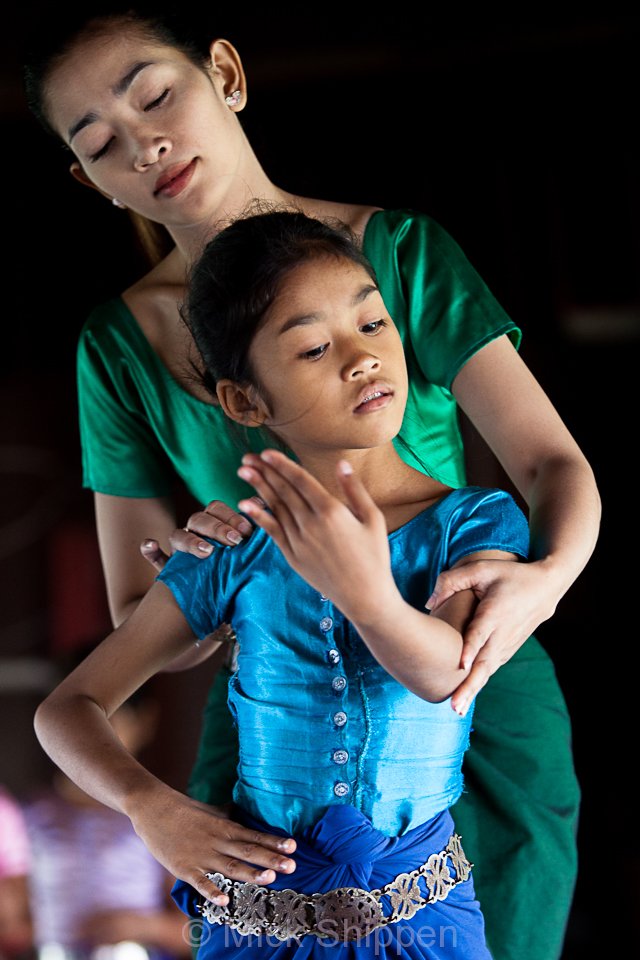
It is thought that 90% of Cambodia’s dancers and musicians were killed during the Khmer Rouge years. The chain of oral traditions passed down from generation to generation by masters of the arts was almost entirely broken. Organisations such as Cambodian Living Arts tracked down a few survivors and employed them to train a new generation of musicians and dancers.
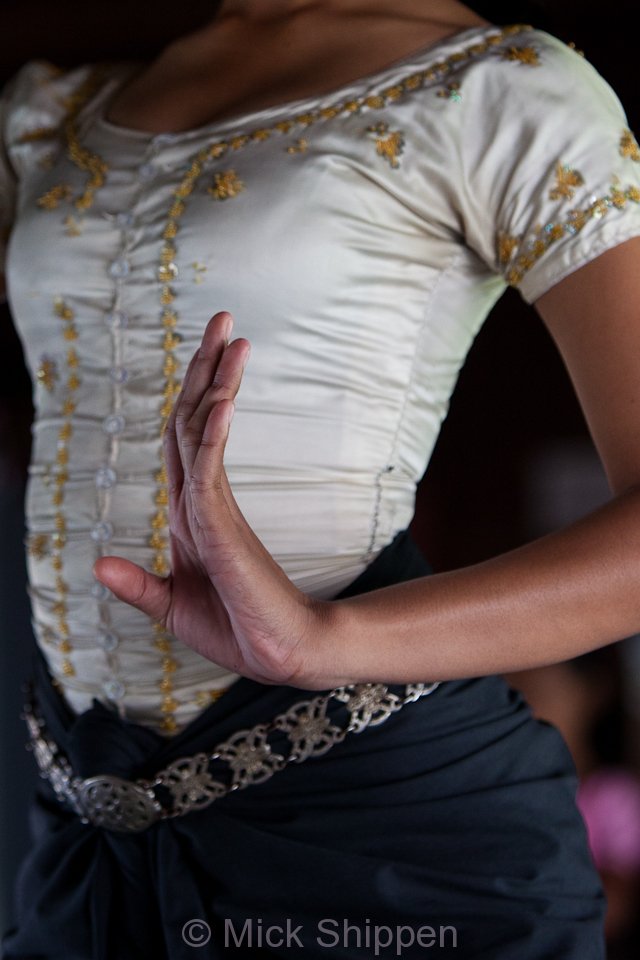
Cambodia classical dance drama is based on the epic poem, Ramayana which has its origins in Indian literature. The dance too draws on the traditions of Indian court dance and is often referred to as Apsara after the female nymphs described in Hindu mythology that were born as dancers to the gods. Images of celestial Apsara dancers dating from the 12th century and earlier can be seen carved on the temples walls at Angkor, evidence that this highly stylized art form has been part of Cambodian culture for centuries.
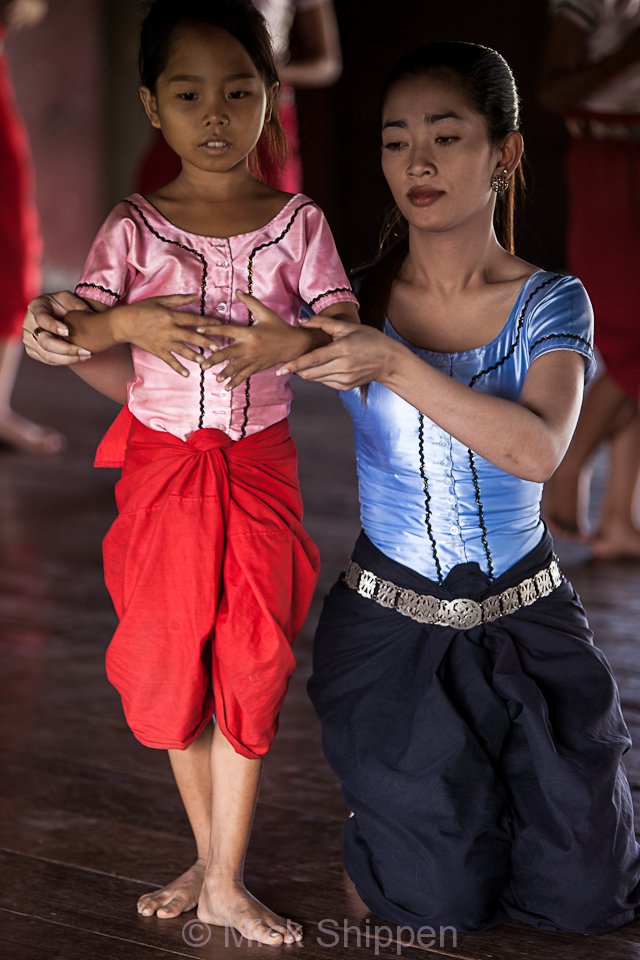
A Cambodian dance troupe, dressed in glittering costumes, elaborate headwear and masks, performs with beauty and grace, their slow movements punctuated by a percussive ensemble that sits to the side of the stage. Acts of the drama are often separated by a narrative read out by one of the musicians.
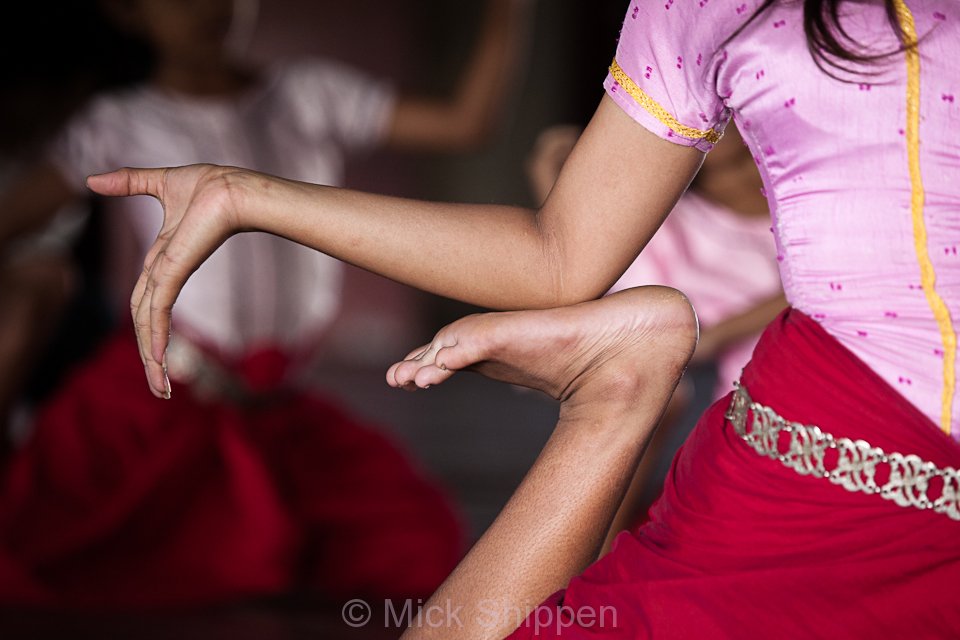
Cambodia’s growing tourism industry has contributed to the revival of traditional dance. In Phnom Penh, regular performances by troupes such as the Children of Bassac can be seen.
Just time for a couple of quick posts before I head off to Cambodia. I’ll be in Phnom Penh for a few days photographing for sample page spreads for a new book on the country – a more comphrensive tome than the last one, Enchanting Cambodia. It’s almost a year since I was there and I’m looking forward to the trip. Phnom Penh is an energetic, fast changing city and will no doubt deliver a few surprises among the familiar.
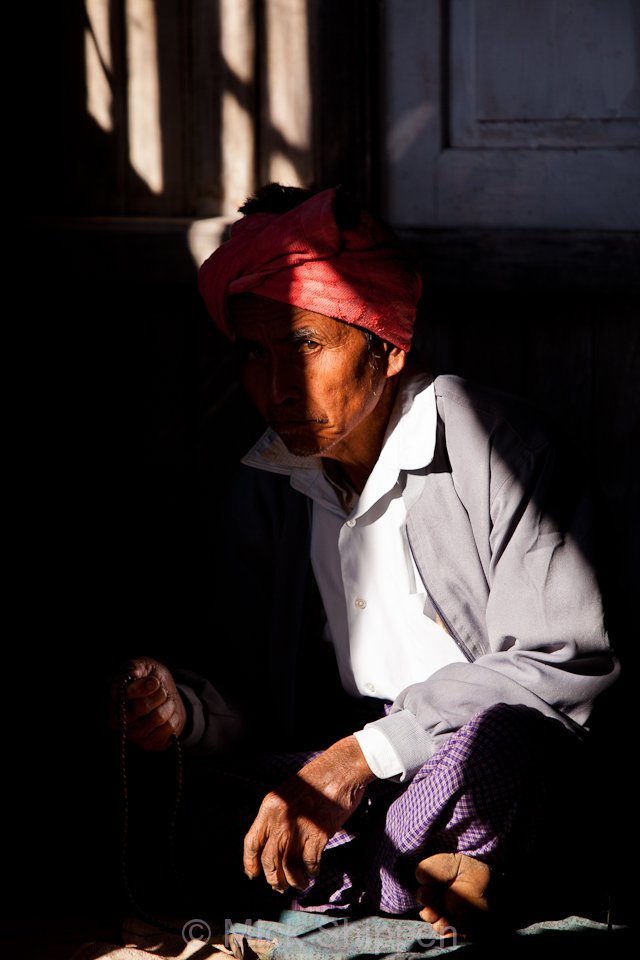
The above shot was taken in a temple on Inle Lake in the Shan State, Myanmar. Once the sun became too bright to photograph on the lake I retreated into a temple where the light is often atmospheric.
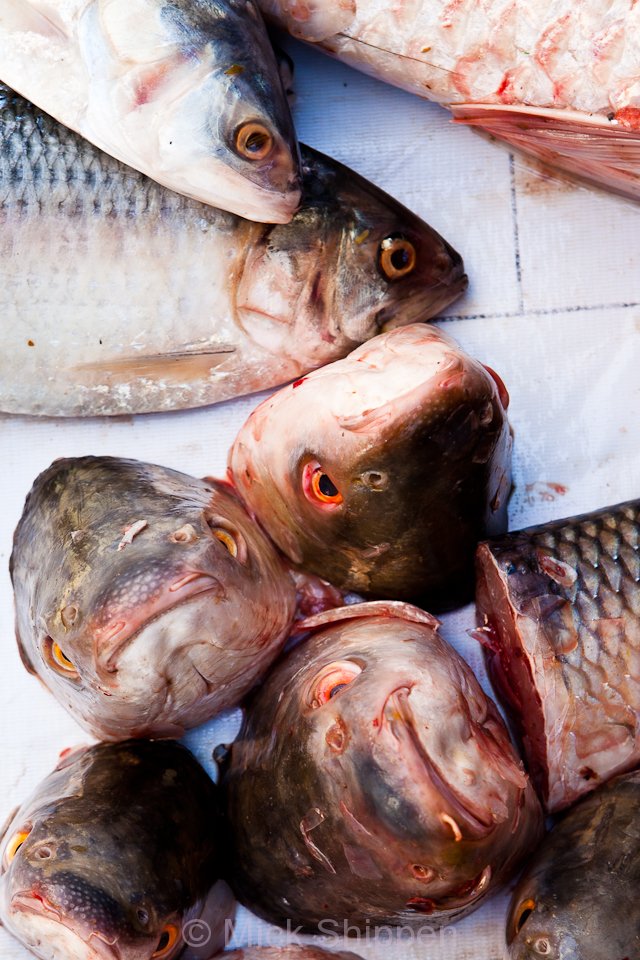
Sometimes I think given half the chance I would simply hang out in the fresh markets of South East Asia and let my photography focus on the details. You may recall that I touched on this topic before when I visited Cambodia last year in the post Finding Beauty in Detail. Alas, magazine editors seem less enthusiastic about an old rice sack covered in fish heads than they should be. But what the hell.
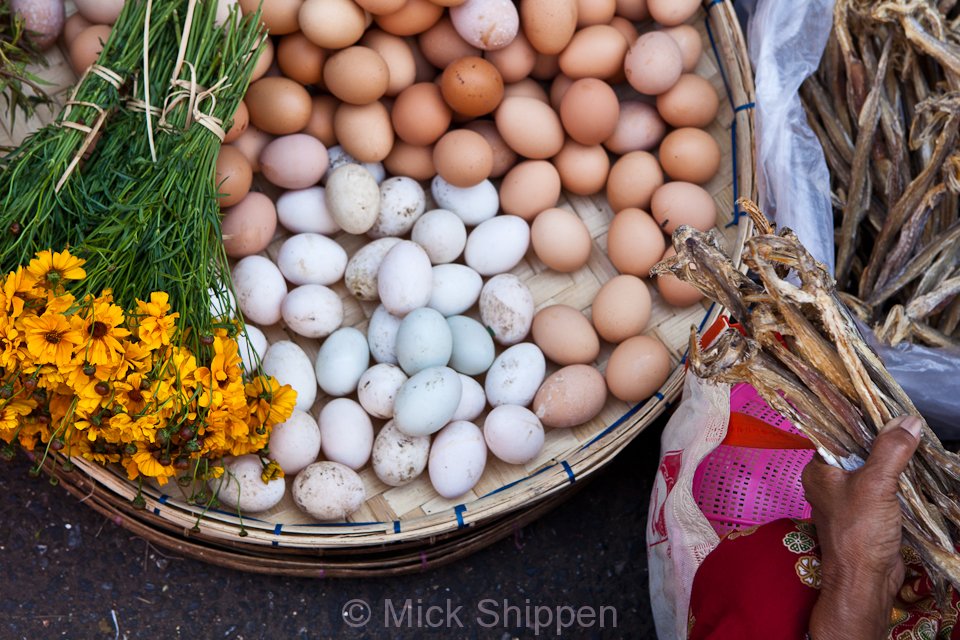
This handful of images is from my recent visit to Myanmar. Wandering around the street markets in Yangon is like walking into a painting, a canvas brushed with colours from Gauguin’s palette and more than a touch of Dali’s surrealism.
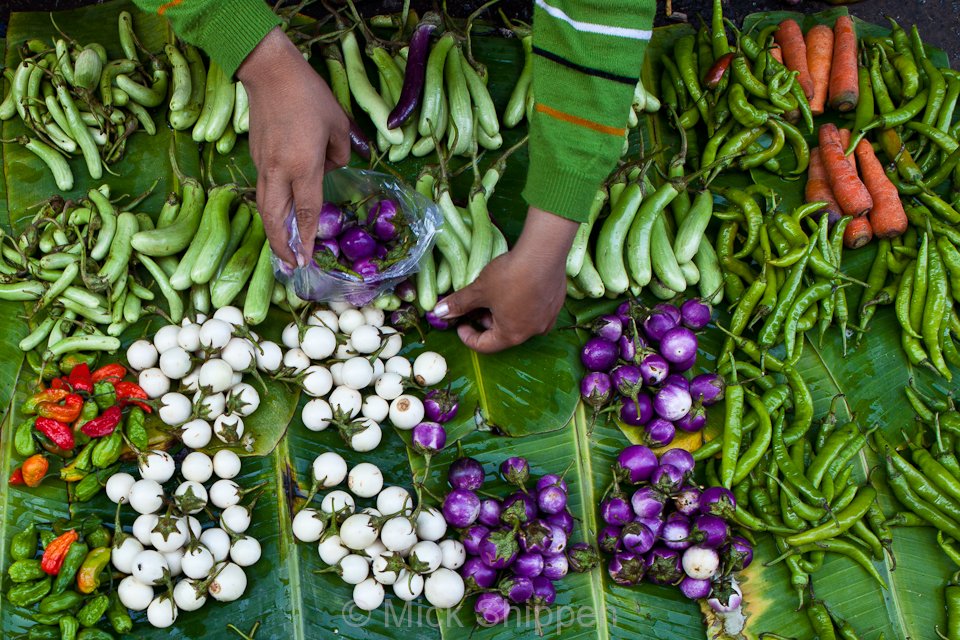
Speaking of Cambodia, following the succes of ‘Enchanting Cambodia’ it seems like a second book on the country is in the pipeline. This time, with a more comphrensive text and more photos so I expect to be spending a considerable amount of time there this year.
